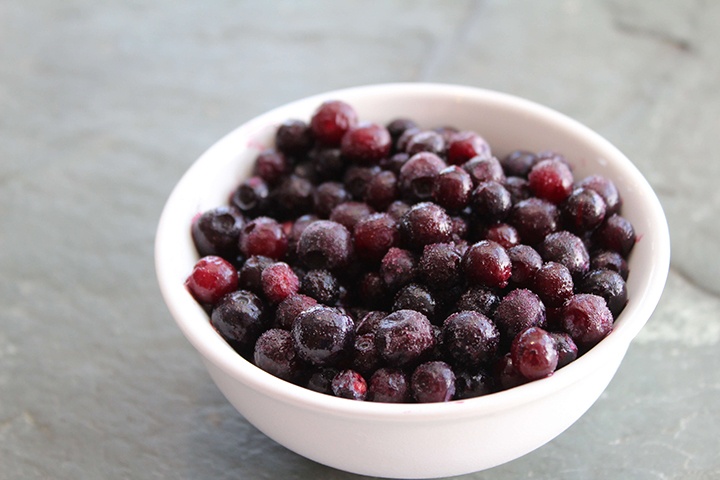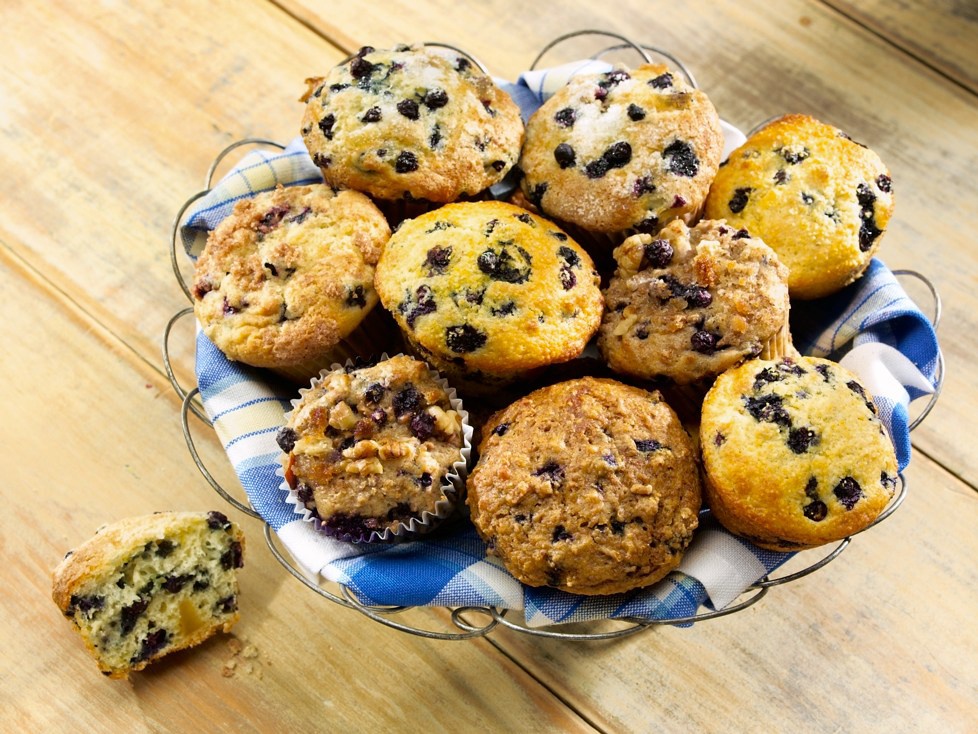When Consistency Matters, Frozen Wild Ones Deliver
Editorial consulting by the Culinary Institute of America
Living in a quiet part of the Northeastern U.S., late spring and summer is one of my favorite times of year, and it’s the time when produce is as good as it gets. The Wild Blueberries are no exception. I love to pick them on hiking trails and ponder of all the dishes I’ll make back in the kitchen.

Chefs tend to have a bias toward fresh products, and we often equate that with unfrozen, even though food that’s frozen within hours of harvest may actually be “fresher” than food that has sat for days or weeks in a warehouse. More importantly, if I only used wild seasonal foods, such as Wild Blueberries, from my foraging, I would be confined to wonderful Wild Blueberry dishes for only a few weeks of the year.
Wild Frozen Tips for Consistent Results
Bear a few principles in mind when working with Wild Blueberries.
Moisture in food changes cooking times immensely, especially in pastries. Due to their size and high solids-to-water ratio, frozen Wild Blueberries do not measure the same as fresh cultivated berries, so recipes may need to be adjusted downwards in weight and volume. The cooking time of the wild berry is also shorter since there is less water to evaporate. If you are preparing a base for multiple uses as I do, remember that wild blueberries have 32% less sugar than cultivated blueberries, and should be cooked to a specific temperature rather than a time or volume target due to their sugar content. The sugars should have just started to caramelize (about 230 degrees F for fructose), but not gotten to the point where the sweetness or browning takes over the flavor of the berry itself. Cooking at too high a temperature will result in a solid, unworkable mass if you plan to refrigerate it.

Some Tips Worth Sharing
- When baking with Wild Blueberries, coat with a pure starch such as cornstarch or arrowroot instead of wheat flour since they require less moisture to gelatinize
- For compotes and bases, cook them from frozen without slacking.
- Once slacked-out, Wild Blueberries begin to break down, so use quickly. However, if you macerate them the juice that they release is a truly dark purple and can be reduced to make an amazing glaze.
- Serve frozen Wild Blueberries by the bowl or in beverages to poolside cabanas for guests to enjoy in the warmer months (a habit I fell into myself on hot nights in the kitchen).

Over the years I have been able to work from coast to coast, and at times I have enjoyed all sorts of berries from South and Central America, Canada, Maine, New York, New Jersey and California. Berries often differ in size, flavor, and sugar content. However frozen Wild Blueberries are consistent. They are always small, potent, and healthy. This means my recipes do not need to be altered. Frozen Wild Blueberries are consistently available to me through my local distributor no matter what state I am working in.
Lemon Soufflé Pancakes with Wild Blueberry Jam
Pancakes:
6 each eggs, separated
2 cups ricotta
2 TBSP sugar
½ tsp salt
4 tsp lemon juice
1 tsp lemon zest
4 tsp baking powder
1 cup cake flour
- In a kitchen aid mixer whip eggs to medium peaks
- In a bowl mix all dry ingredients and then wet
- Fold in whipped egg whites a third at a time until batter in smooth
- Heat griddle to 325°F and make pancakes before batter deflates
Wild Blueberry Jam:
5 cups frozen Wild Blueberries
3 cups sugar
1/3 cup lemon juice
1 tsp lemon zest
- Add all ingredients into a medium size pot
- Cook on medium heat until jam reaches 180°F stirring often
- Remove from heat and cool before storing
About the Author
By Sean Kahlenberg ‘04, Lecturing Instructor, The Culinary Institute of America

Sean Kahlenberg is a Lecturing Teacher at the Culinary Institute of America (C.I.A.) at the Hyde Park Campus. Chef Kahlenberg teaches numerous culinary classes throughout the program. A native Australia and a 2004 graduate of the C.I.A. Chef Kahlenberg worked in a number of restaurants across world, which led him to the field of culinary consulting in Las Vegas, Nevada. From this he returned to his Alma Mater and is currently the Chef Instructor of the campus’ Italian Restaurant Caterina di Medici.

